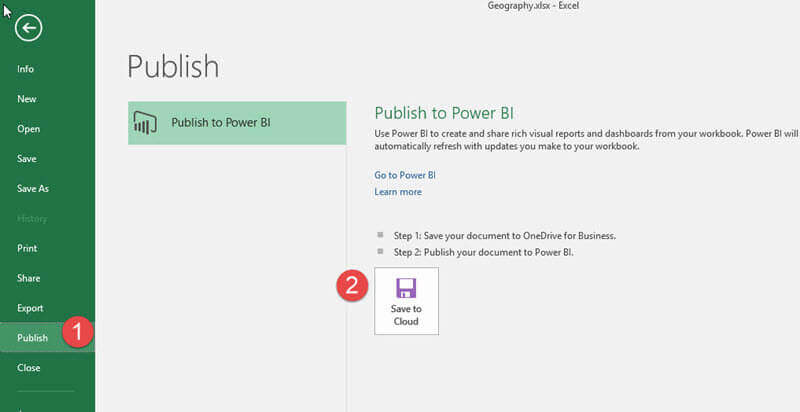

- #Power bi desktop export to excel pdf
- #Power bi desktop export to excel install
- #Power bi desktop export to excel code
- #Power bi desktop export to excel free
You can label and classify the PBIX files that Power BI Desktop works with, and you can label datasets and reports in the Power BI service. This will allow you to use the same data security policy, compliance and auditing tools for Power BI as for Office (and third-party applications that build in MIP). So Power BI will now use sensitivity labels from Microsoft Information Protection (MIP) to protect information in Power BI Desktop, in the Power BI service and when reports are exported to Excel, PowerPoint or PDF.
#Power bi desktop export to excel pdf
This is a paradox: you’re taking your most sensitive corporate data, you’re giving it to everybody – and everybody’s working from home.”īlocking export to PDF to protect confidential data is frustrating for employees who need to work with the data. “If I can export my data out to Excel and then email it to somebody and that’s where the security stops, it really breaks down, especially in the world of remote work. “Data travels, and if the security is left behind as the data travels from your data warehouse to your BI system to Excel to PowerPoint to PDF, then how good is it?” Ulag points out. “People want to be able to work with data in the tools that they use.” he adds.īut when you export a report to Excel to dig into the numbers, what happens to any rights management that’s been applied to sensitive company data? Role-based access permissions, row-level security and object-level security may not be enough to protect data – particularly with so many people working at home. “If you want to build a new BI product, the first feature you build is export to Excel,” jokes Arun Ulag, CVP of Microsoft Power BI. Whatever business intelligence tool you’re using, it connects to Excel. Information protection makes sure that only people with permissions see data in Power BI, while retaining the ability to share top-level trends, balancing productivity and security. Additional contributors would be greatly appreciated.Microsoft’s Power BI gets new tools to prevent leakage of confidential data The implementation of these additional features depends on people’s contributions. Excel Add-in to connect to Power BI Desktop: Excel opens the Power BI Desktop file that is necessary to establish a connection – a connection created in a previous session started by Analyze in Excel for Power BI Desktop.Open Excel Report: instead of creating a new Excel file, open an existing Excel file and replace the connection so that it works with the current Power BI Desktop window.Create Excel Report: instead of creating an empty Excel file, create an Excel file starting from a template.Future versions of this tool could have the following features: The first version of this tool was a relatively simple project.

Read the following sections for ideas for future versions. If you are a developer and you want to contribute to the project, you are very welcome to do so. This way, as an end user you can have the tool available in your Power BI Desktop in just a few seconds.
#Power bi desktop export to excel code
The code and the installer are built and digitally signed by SQLBI.

#Power bi desktop export to excel free
The Analyze in Excel for Power BI Desktop tool is entirely free and open-source with MIT license. The AnalyzeInExcel.odc file is created by the tool to establish the connection between Excel and Power BI Desktop. You can safely click Enable, or you can open the ODC file with Notepad to make sure that there is no malicious content in there. If you use a version saving the ODC file, the following warning is displayed as a standard security measure because Excel does not automatically trust the ODC file containing the connection. This technique is also used in following versions if the alternative technique to create a new model in Excel fails for any reson. Versions 1.0.x of this tool was saving the connection string into an ODC file, which was following opened by Excel.
#Power bi desktop export to excel install
By installing Analyze in Excel for Power BI Desktop, you can install a dedicated external tool that creates an Excel file connected to the data in the Power BI Desktop model.


 0 kommentar(er)
0 kommentar(er)
